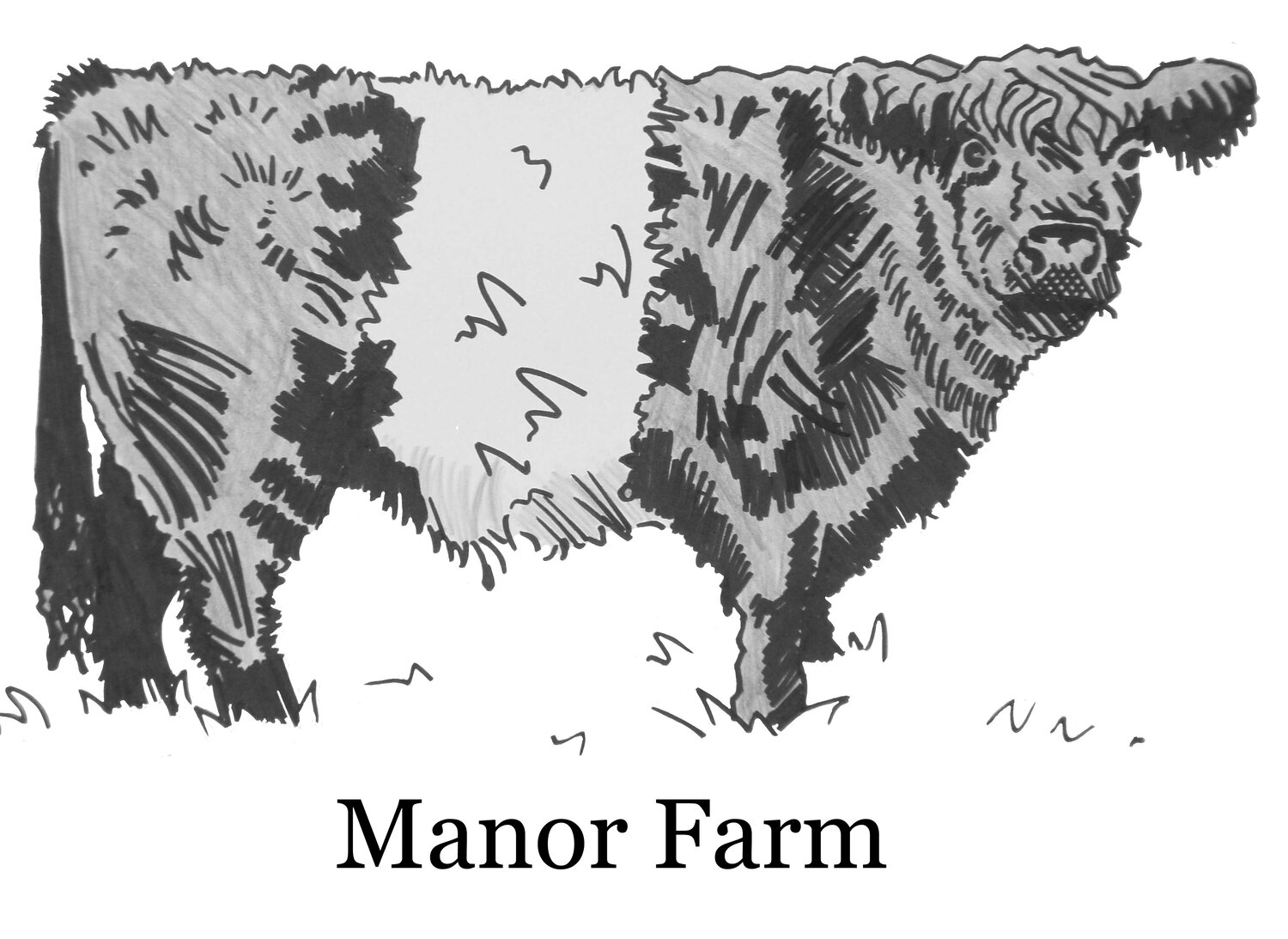Proud To Produce
They say ‘a change is as good as a rest’ and I certainly agree with that sentiment after my refreshing break away from our farm in the south, to attend a training course held at Racy Ghyll in the north east of the Lake District.
I was fortunate to have a day to myself exploring Gowbarrow Fell with its views over Ullswater and towards Racy Ghyll, which I would see more of in the following days.
With the birthplace of our bull, Barwise Mister M not far away, I also found time to visit his breeder Carolyn Fletcher and it was a pleasure to take a look around the farm and visit the Barwise Belted Galloway herd.
Back to the course: the Grazing School hosts were Caroline Grindrod, a consultant in regenerative livestock and food systems and best-selling author and Lakeland hill farmer James Rebanks.
James and his family have farmed in the Lake District for generations and now James and his wife Helen and their children are working together with nature and have made some bold changes to their farming practices at Racy Ghyll over the past four years.
It felt like a very natural and down to earth couple of days looking at nature friendly farming and habitat restoration already underway at Racy Ghyll, the fundamentals of soil health, improved water cycles and grassland management techniques whilst balancing the whole farm context.
We were a cross section of farmers and land managers from family farms, small holdings and large estates. And from the buzz amongst the group, there was a sense that whilst each farm is different and comes with its own challenges, we’re all trying to improve and learn more about how we can do things better on the land we care for; and what better way than sharing ideas amongst an inspirational group of farmers who are at different stages of regenerative farming.
A common thread during Grazing School was the reminder that we should continue to ask ourselves whether the management changes we make can be balanced socially and economically, so that individual farms are in a resilient position to undertake environmental and regenerative farming techniques as part of the whole farm context. The two day event surpassed my expectations and we could easily have continued talking for another day!
Regular cost analysis has been an important tool for our business in the last forty years, but since Laurence began re-structuring the business in 1989 we’ve also had valuable input from a farming consultant who brings knowledge and experience to the table and provides a sounding board to new ideas or changes in equipment and farming practices.
Our regenerative journey began at least 25 years ago (although it wasn’t called that then!) when we ceased ploughing the land, but this only became possible due to new technology and alternative farming techniques becoming available.
Ploughing used to be the first preparation of the soil for creating a seedbed, a method of turning the soil over to bury weed growth and debris from the previous crop, breaking and loosening the soil, before further cultivation and sowing the next seeds.
New technology enabled us to move over to a minimum tillage system without ploughing and we purchased our first ‘direct drill’ which creates a slot in the soil with minimal disturbance, into which the seeds are placed.
By not ploughing, the theory is that soil biology, structure, organic matter and soil health is gradually improved year on year. Soil disturbance, loss of moisture and potential erosion is significantly reduced and carbon from the soil is not released into the atmosphere.
We’ve now progressed to a ‘zero-till’ system for our combinable crops and have a new Horsch Avatar direct-drill.
These changes to our farming techniques over three decades, bring further benefits to soil health by reducing tractor passes across the fields by three times; thereby reducing soil compaction and the use of fossil fuels.
However, our aim to improve soil health and further reduce emissions, doesn’t end there. This week has seen the arrival and setting up of a Shelbourne Reynolds ‘stripper-header’ for the combine harvester.
A conventional header or cutter bar on a combine harvester, cuts the stem of the crop quite low to the ground and takes it all into the combine, where mechanisms sort and thresh the grain from the straw. The chopped straw is pushed back out of the harvester into the field where it’s then baled and stacked.
In contrast, a stripper header uses rotating fingers to remove the grain from the top of the plant and leave the stem or straw standing in the field. Because the combine harvester has far less material to process, it will move more quickly through the field and use half the diesel. For these combinable crops we’ll no longer be driving across the fields to bale, stack and cart the straw away, again reducing soil compaction and use of fossil fuel.
The next seeds will be sown by the direct drill into the field with the standing straw and any soil disturbance between these combinable crops will be minimal and should reduce the germination of weeds that might compete with the emerging crop.
With regular evaluation of the business and consideration of new systems or technology, we aim to continue improving soil health whilst growing food and further reducing emissions.
In my opinion ‘one size doesn’t fit all’ in British farming, even though some policies or the latest trends would have you think otherwise. What matters is that British farmers are trying to grow food and care for the environment as best they can within their whole farm context and that they continue to listen, learn, and try to improve what they do.








